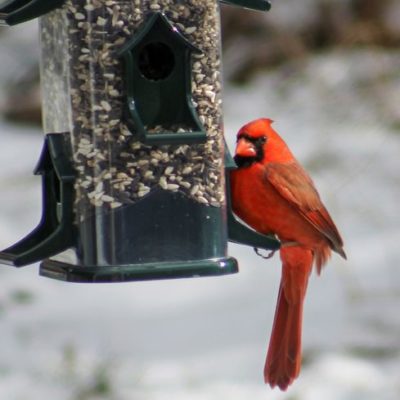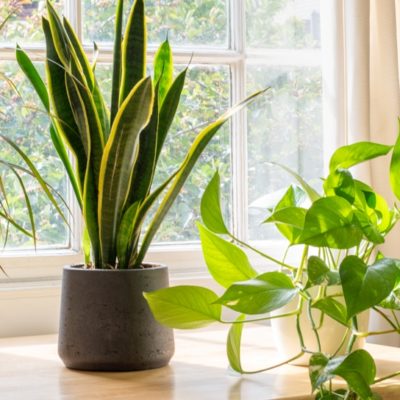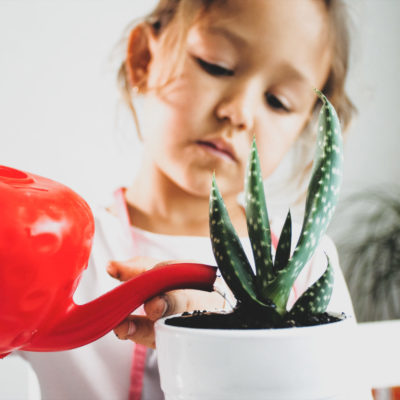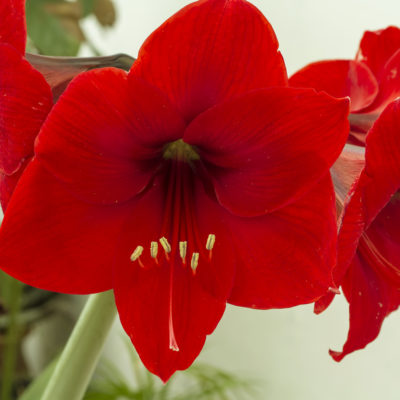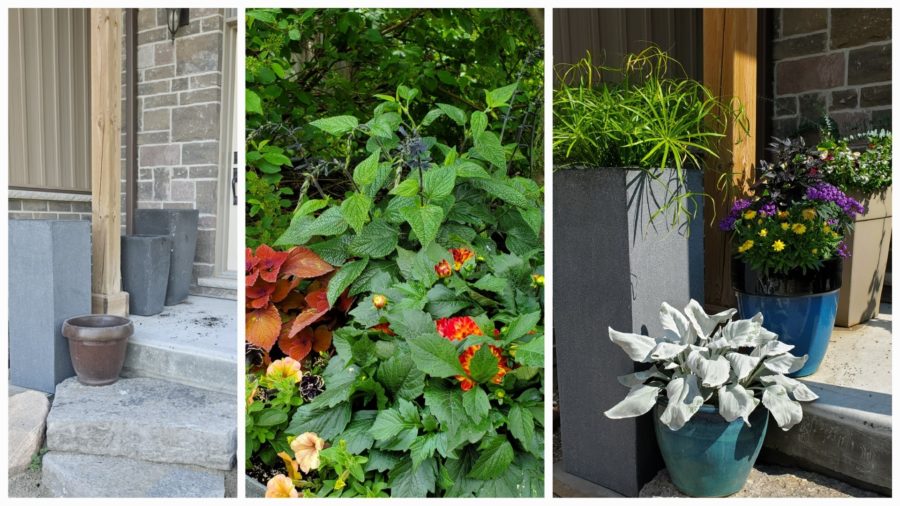
Planting Your Own Hanging Baskets and Containers
Fun Fact: Belgian Nursery plants and grows over 6,000 hanging baskets and 1,500+ planters and window boxes on site! So we know a few tips and tricks when it comes to planting your own containers for Annuals, Vegetables, and Herb plants:
Sun or Shade
Before you start selecting your plants, you have to know your light conditions. The amount of sunlight the intended area receives is one of the most important factors, simply because it’s the only one that’s out of our control. Petunias that are tucked under a porch overhang will not have enough energy to reach their full blooming potential, and Boston Ferns can burn to a crisp in the afternoon sun. If you’re unsure whether your site is considered full sun or part shade, these definitions can help:
Full Sun = Sun all day with little to no shade; minimal shade that does not exceed a few hours, either in early morning or late afternoon; typically a south- or west-facing location
Part Sun = Direct sun shining on the location for approximately half the day, particularly in the afternoon when sunlight is strongest; light filtering through a deciduous tree canopy (maple, oak, etc.) for most of the day can be considered Part Sun
Part Shade = Area gets direct sun for up to half the day, preferably in the morning when the sun is weaker; light filtering through a tree canopy can be considered Part Shade
Full Shade = Shady all day with little to no sun; typically under a dense tree canopy or on the north side of a building, hedge, etc.
Highest Sun Energy Levels: 11am to 4pm
East Facing = Morning Sun (good light, weaker energy levels)
South Facing = Full Sun (ideal vegetable growing location)
West Facing = Afternoon Sun (excellent light with strong energy levels)
Container Size
The size of your container will determine how many plants will fit into your combinations, or even which varieties will fit; a Banana plant, for example, will not find joy in a window box. The following chart can help with your plant math (based on Annuals sold in 4″ pots):
10″ Container – 2 to 3 plants 24” Window Box – 4 to 6 plants
12″ Container – 3 to 5 plants 32” Window Box – 6 to 8 plants
14″+ Container – 6 to 12 plants
There’s no need to fill your containers to the brim – if you’re planting in late May/early June, they’ve still got 3 whole months to grow and expand!
Water, Water, Water!
Always, ALWAYS make sure your containers have drainage holes! Hanging baskets, planters, and window boxes all dry out much faster than garden beds, so be sure to water them deeply until you see liquid running out of the bottom of the pot/basket. In the summer heat, be prepared to water all your containers at least once per day (in the morning if possible) if not twice.
Fertilizer
As with all your annuals and vegetables, feed your baskets and containers an all-purpose or flowering fertilizer every 2 weeks throughout the growing season. We recommend a water-soluble solution that can be added to your watering cans or attached to your garden hose. Exceptions to this 2-week feeding rule include Petunias, which are heavy feeders and would appreciate a weekly feeding, and Morning Glories which should not be fertilized at all if you want to see their beautiful blooms!
Soil – Only Use Good Quality Potting Soil for All Baskets and Containers
We only recommend good quality potting soil for all your hanging baskets, planters, window boxes, and other containers. Potting soil has added perlite (those little white bits) which helps to aerate the soil and keep it nice and light, a perfect home for tender roots to grow and expand. Garden soils and additives are far too heavy for basket and container planting; they hold too much moisture for too long (which will cause root rot) and the weight will crush the roots.
Heights, Colours, Textures, Foliage, All Up To You!
Once you know your light situation (sun or shade) the fun can really begin! Walk through the greenhouses and see what varieties and colours speak to you. Maybe an Annual Grass for height? Geranium for bright colour? Maybe this is the year you try a trailing Lotus in your planters – it’s all up to you! Check all the individual tags for their heights and spreads; some varieties can spread farther than others, and you’ll want to give everyone enough elbow room to thrive in their new homes.
Annuals, Vegetables, Herbs, even Tropicals!
Of course we all know annuals are a perfect choice for all your basket and container needs – colour all summer long? Yes please! – But you can also use Herbs, Vegetables, and even Tropicals in your arrangements. Lemongrass and Stevia offer height and texture while Oregano and Thyme fall beautifully over pots’ edges; Peppers and Eggplant have bright and delicious fruit, and there’s even Tumbler Red or Tumbling Tom Yellow cherry tomato varieties that will cascade over the edge of a planter! And we’ve all seen and admired the magazine pictures of gorgeous planters filled with Tropical blooms and foliage, but a word of warning: Tropical houseplants need temperatures to stay above 15C day and night, so you’ll have to wait until mid-June (typically) before setting those beauties outside for the summer.
But What About Perennials?
Perennials can be used in containers, but you’ll have to keep a few things to in mind:
– they have a shorter bloom time, typically 3-6 weeks instead of a full summer like annuals
– it takes at least 2 to 3 years before they reach full height and maturity (their 1st year is spent on root production, so not much growth or blooms up top)
– to reach that maturity they need winter dormancy outside, preferably in a garden bed where their roots are protected from frosts and cold temperatures with an insulating cover of snow
Steps to Creating Gorgeous Arrangements
1) Fill containers/baskets with potting soil, leaving an inch from the top to avoid spills when watering
2) Start with your tallest plants and work your way down;
– For containers seen from all sides (360° view) place your greatest height in the centre, surrounded by middling heights and trailing/cascading varieties at the container’s edge.
– For containers against a wall/fence, place tallest varieties at the “back side” and plant forwards with middling and trailing heights, accordingly.
3) Keep soil levels consistent – no hills, no valleys. This means not too high on the plant’s crown (which can choke out its growth) and not too low (plant will be unstable which can cause them to fall and/or break).
4) Once you’re happy with the final placement, water gently and deeply around each individual plant to settle the soil and secure them in their new home. Tip: If your container is quite large, put it in its intended spot first before watering–dry soil is easier to carry than wet!
5) Step back and enjoy all your hard work!


